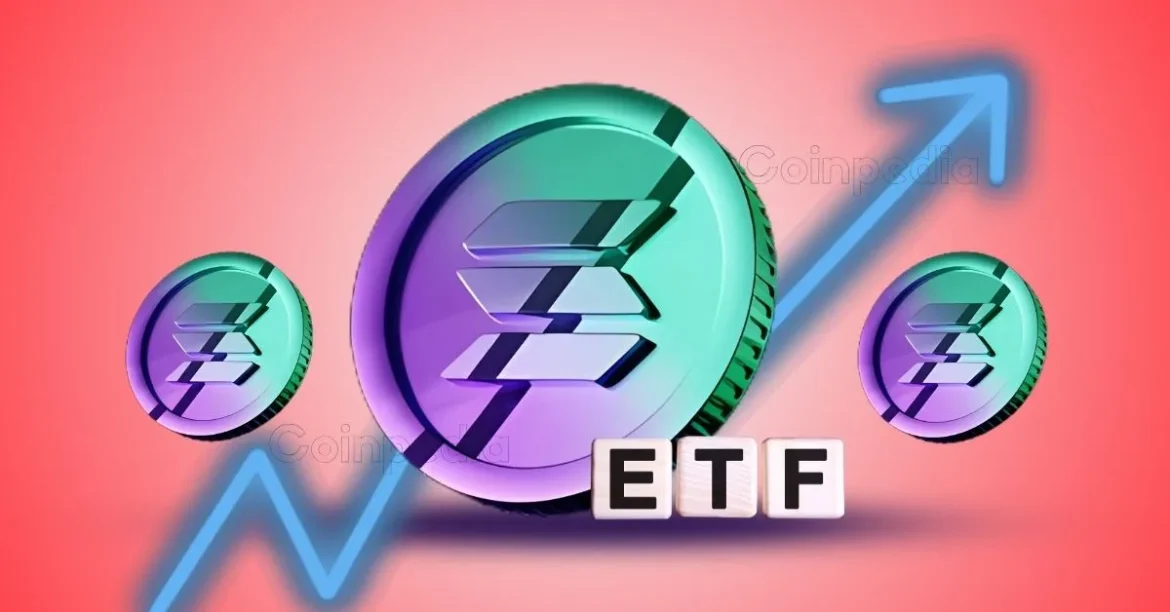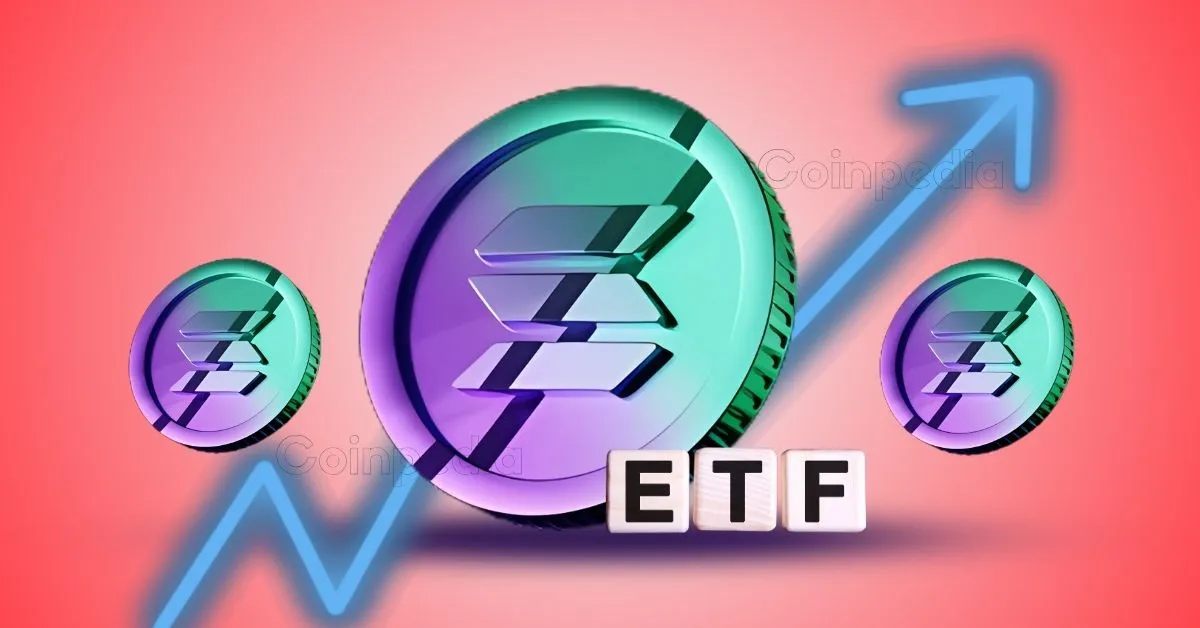The Evolving Landscape of Solana ETFs: A Comprehensive Analysis
The prospect of a Solana Exchange-Traded Fund (ETF) in the United States has sparked considerable excitement and speculation within the cryptocurrency community. The recent activities of the Securities and Exchange Commission (SEC) related to Solana ETF filings suggest a potentially significant shift in the regulatory landscape for digital assets. This report delves into the current status of Solana ETF proposals, examining the key players, potential timelines, and possible implications for the price of SOL.
The SEC’s Shifting Stance
Recent reports indicate a notable change in the SEC’s approach to Solana ETFs. The agency has requested potential issuers to amend their S-1 registration forms, signaling a willingness to engage with the proposals more seriously than before. This move is being interpreted by many as a precursor to potential approval, possibly as early as mid-summer or by July 2025.
This perceived shift is significant because earlier indications suggested the SEC might reject spot Solana ETF applications and halt the approval of new crypto ETFs. The SEC’s current engagement suggests that these earlier signs may have been premature or that the regulatory environment is evolving rapidly. The SEC acknowledged Grayscale’s revised application for a spot Solana exchange-traded fund, which is a major move for Solana. Polymarket traders now predict a high chance of a spot Solana ETF approval by the end of the year.
S-1 Forms: A Key Step in the Approval Process
The S-1 form is a crucial document required by the SEC for companies planning to offer securities to the public. In the context of ETFs, the S-1 provides detailed information about the fund’s structure, investment strategy, and associated risks. The SEC’s request for amended S-1 forms from potential Solana ETF issuers indicates that the agency is scrutinizing these proposals closely and seeking to ensure that they meet regulatory requirements.
Grayscale, for instance, is filing to rename its prospective Solana ETF while removing staking from the trust in a new S-1 filing. 21Shares also filed an S-1 form with the SEC in June 2024 to bring a Solana ETF slot for the US. VanEck also filed a Form S-1 with the SEC under the 1933 Act.
19b-4 Forms and the Path to Market Access
While S-1 forms cover the fund’s registration, 19b-4 forms are filed by exchanges seeking permission to list and trade the ETF. Once the SEC acknowledges receipt of the 19b-4 filing, a 240-day period begins during which the agency must approve or disapprove the proposal.
Key Players in the Solana ETF Race
Several prominent firms have entered the arena to launch Solana ETFs, each vying for a share of what could be a multi-billion dollar market. Some notable players include:
- Grayscale: A leading digital asset manager, Grayscale has filed to convert its existing Solana Trust into an ETF.
- VanEck: VanEck was the first to file for a Solana ETF on June 27, shortly after the SEC approved 19b-4 forms for spot Ethereum ETFs.
- 21Shares: This company filed an S-1 form with the SEC in June 2024 to bring a Solana ETF slot for the US. The 21Shares Core Solana ETF (the “Trust”) is an exchange-traded fund that issues common shares.
- Canary Funds: Canary Funds have also filed S-1 forms for a Solana ETF. The Canary Solana ETF (the “Trust”) is an exchange-traded product that issues shares of beneficial.
- Bitwise: Bitwise registered a Solana ETF in Delaware, signaling its intent to file an official S-1. Cboe BZX Exchange also filed Form 19b-4 for Bitwise Solana ETP
Potential Timelines and Approval Dates
Predicting the exact timeline for Solana ETF approval is challenging due to the SEC’s often unpredictable decision-making process. However, based on current developments, several scenarios are plausible:
- Accelerated Approval (Mid-Summer 2025): The SEC’s request for updated S-1 forms and intention to provide comments within 30 days of submission has raised hopes for a potential approval as early as July 2025.
- Standard Review Process (Late 2025/Early 2026): If the SEC follows its typical review process, which includes assessing the 19b-4 filings alongside the S-1 forms, approval could take longer, potentially extending into late 2025 or early 2026.
- Delayed Approval or Rejection: The SEC could delay altcoin ETFs until June 2025. Despite recent progress, the possibility of further delays or even outright rejection remains. The SEC has delayed decisions on five Solana ETFs, seeking public input, while Solana’s price remains steady amid uncertainty.
Impact on SOL Price
The approval of a Solana ETF would likely have a significant impact on the price of SOL, driven by several factors:
- Increased Institutional Investment: ETFs provide a regulated and accessible avenue for institutional investors to gain exposure to SOL without directly holding the cryptocurrency. This influx of capital could drive demand and push prices higher.
- Mainstream Adoption: ETFs can broaden the appeal of SOL to retail investors who may be hesitant to navigate the complexities of cryptocurrency exchanges and wallets.
- Positive Market Sentiment: The approval of a Solana ETF would signal increased regulatory acceptance of the underlying cryptocurrency, boosting overall market sentiment and attracting more investors.
However, it’s essential to acknowledge that the market performance of SOL will also depend on broader market conditions, technological developments within the Solana ecosystem, and competitive pressures from other cryptocurrencies.
According to BeInCrypto data, Solana’s powering token is up by almost 10% amid ETF optimism. As of this writing, SOL was trading for $259.20. Solana (SOL) faces technical weakness on the daily chart, with indicators signaling.
Staking Considerations
One notable aspect of the Solana ETF proposals is the treatment of staking. Staking involves locking up cryptocurrency holdings to support the operation of a blockchain network, often in exchange for rewards.
Grayscale, for example, has removed staking from its prospective Solana ETF. The decision to exclude staking from the ETF could be influenced by regulatory considerations or a desire to simplify the fund’s structure.
Regulatory Hurdles and Market Concerns
Despite the growing optimism, several challenges and concerns remain:
- SEC Scrutiny: The SEC has a history of cautiousness when it comes to approving cryptocurrency-related investment products. The agency has cited concerns about market manipulation, investor protection, and the custody of digital assets.
- Market Volatility: The cryptocurrency market is known for its volatility, which could deter some investors from investing in a Solana ETF. S-1 registration statement indicates that the trading prices of many digital assets, including Solana, have experienced extreme volatility in recent periods and may continue to do so.
- Competition: The ETF market is becoming increasingly crowded, with numerous firms vying for market share. A Solana ETF would need to differentiate itself and attract sufficient investor interest to succeed.
Conclusion: A Cautiously Optimistic Outlook
The path toward a Solana ETF in the U.S. is far from certain, but recent developments suggest that the SEC is engaging with the proposals more seriously than before. The request for amended S-1 forms, coupled with the agency’s stated intention to provide feedback within 30 days, has fueled optimism for potential approval, possibly by mid-summer 2025.
While regulatory hurdles and market concerns persist, the potential benefits of a Solana ETF, including increased institutional investment, mainstream adoption, and positive market sentiment, are substantial. If approved, a Solana ETF could significantly boost the price of SOL and solidify its position in the competitive cryptocurrency market. Investors should closely monitor the SEC’s actions and the progress of the various ETF filings to stay informed about this rapidly evolving situation.





